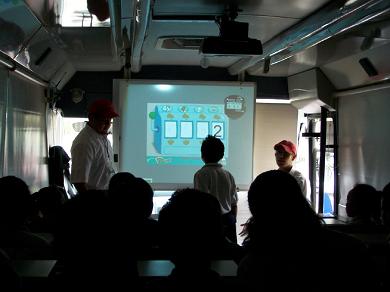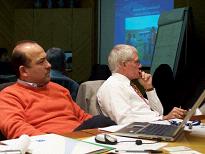Talloires Network in Mexico
Reports from universities across Mexico:
1) Overview of Mexico’s Servicio Social Program
2) The work of the Universidad Veracruzana
3) Talloires Network Meeting in Mexico City
University Students’ Servicio Social: A National Commitment to Service
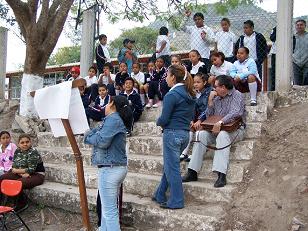 In Mexico, students must complete obligatory service as part of their undergraduate degree, either as part of Servicio Social (social service) or Praticas Profesionales (professional internships).
In Mexico, students must complete obligatory service as part of their undergraduate degree, either as part of Servicio Social (social service) or Praticas Profesionales (professional internships).
The service is designed so that the students undertake practical activities which both benefit society and complement their theoretical, professional, or technical studies.
Servicio Social is carried out during a time period of no less than six months and no more than two years, with a total of 480 hours of service carried out during the working week in four hour periods. Practicas Profesionales follow the same guidelines, although they total only 240 hours.
Some exceptions are made when the educational institution demands a greater or lesser number of hours. Medical students spend their whole final year of professional training working for the Servicio Social program. They do not earn any curricular credits, but the year of service forms part of the required study plan for medical careers and degrees.
The Universidad Veracruzana: Global Knowledge for Local Action
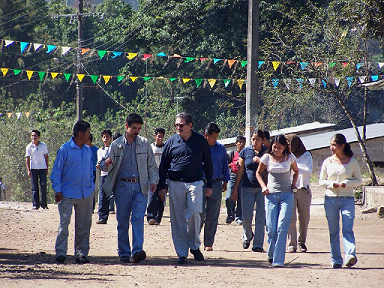
Rob Hollister and Susan Stroud of the Talloires Network Secretariat met with the now Minister of Education Victor Arredondo, previously the Rector of the Universidad Veracruzana and Mario Fernandez de la Garza, currently Director of Outreach at the university.
In a presentation in South Africa last year, these two leaders in Mexican higher education explained their university’s commitment to the Servicio Social program. They outlined their belief that higher education can play a key role in promoting local empowerment for self-sustained development. They also described the importance of establishing a global network of university programs to enhance the use of best practice and and technological transfer.
They also described their response: "In Mexico, the University of Veracruz has dealt with those issues by delineating an institutional strategy based on the notion that community engagement is the essence of the three main academic functions of a university: teaching, research and extension; and not a fourth function in itself. This new approach was a response to the fact that even when Mexican higher education has traditionally defined Social Service –a diversified version of community service- as a compulsory student activity to apply for graduation, its implementation has not been truly systematic and in many cases has fallen into a sort of bureaucratic procedure for graduates."
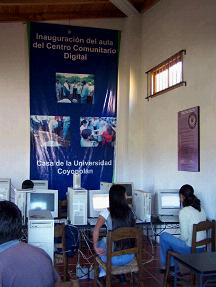
University Social Service Brigades
In 1997, the university established a social outreach program called the University Social Service Brigades. Brigades of five to seven students, who have either totally or nearly completed their academic studies, spend a year in a rural community. The teams are multidisciplinary and include students studying medicine, dentistry, art, information technology, and agronomy, for example. They work in partnership with local authorities, and work to offer services in the communities where state services are not yet offered. (For more information, see the paper mentioned above.)
When a Bus is a Classroom: the Vasconcelos Project
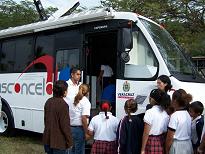
As part of their Brigades project, the Universidad Veracruzana also works to bring information technology to schools in some of the poorest communities in the region.
Using a fleet of 15 buses, students and graduates travel to communities and carry out trainings for students, teachers, and community members. The buses are equipped with 15 laptop computers, an Encyclomedia Screen, a data projector, self-directing satellite antenna, surround sound, remote access camera, DVD and VHS players, education software, air conditioning, an emergency power plant, and a set of reference books.
The students spend a year teaching communities to maximize the benefits of available technology and supporting the growth and development of distance education centers.
The Vasconcelos Project was designed by Victor Arredondo to meet the specific educational needs of the state of Veracruz. The state has more than 22,000 communities, of which 63.8% have less than 50 inhabitants — in total, almost half of the population lives in rural areas.
Talloires Network Meeting
On March 22 2007, representatives of the Talloires Network met with representatives from seven universities and the Union de Universidades de America Latina in Mexico City. The seminar was organized and graciously hosted by Ana de Gortari from the Universidad Nacional Autonoma de Mexico
Attendees came from a large range of institutions, comprising approximately half the student population of Mexico. The attendees were from large universities, which each enrol hundreds of thousands of students. They have multiple campuses, are linked to high schools, and include courses at different levels in many disciplines.
Participants included:
-Ana de Gortari, Universidad Nacional Autonoma de Mexico
-Susan Stroud, Talloires Network
-Rob Hollister, Talloires Network
-Andres Aluja Schunemann, Universidad Autonoma de Yucatan
-Ernesto Benavides, Tecnologico de Monterrey
-Dolores Sanchez Soler, Instituto Politecnico Nacional
-Elia Marum Espinosa, Universidad de Guadalajara
-Raul Lopes Aranzabal, Universidad Iberoamericana
-Leticia Bautista, Universidad de Hidalgo
-Fernando Arruti, Union de Universidades de America Latina
Representatives from participating universities made presentations on the civic engagement work being done at their own institutions, discussing their successes and the challenges they faced going forward. Rob Hollister and Susan Stroud in turn described the purposes and goals of Talloires Network, leading a discussion on how the network could be most useful to new members, particularly in the Mexican context.
Read the report from the meeting here.
Powerpoints describing the work at participating universities:
